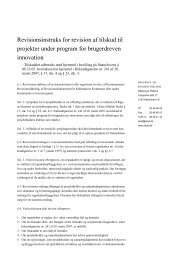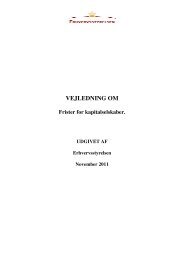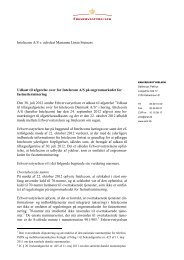Risk-Based Approach â Guidance for Money Service Businesses
Risk-Based Approach â Guidance for Money Service Businesses
Risk-Based Approach â Guidance for Money Service Businesses
You also want an ePaper? Increase the reach of your titles
YUMPU automatically turns print PDFs into web optimized ePapers that Google loves.
<strong>Risk</strong>-<strong>Based</strong> <strong>Approach</strong> – <strong>Guidance</strong> <strong>for</strong> <strong>Money</strong> <strong>Service</strong> <strong>Businesses</strong> - July 2009 Agents that are unwilling to follow compliance program review recommendations, and there<strong>for</strong>esubject to probation, suspension or termination.Agents who fail to provide required originator in<strong>for</strong>mation upon request.Agents whose data collection is lax, sloppy or inconsistent.Agents willing to accept false identification.Agents willing to enter identification into records that contains false in<strong>for</strong>mation, non-existentaddresses that would be known to be non-existent to a person in that area, or phone numbers thatare used as fillers.Agents with a send-to-receive ratio that is not consistent with other agents in the locale or isconsistent with participation in a criminal transaction corridor.Agents whose seasonal business fluctuation is not consistent with other agents in the locale or isconsistent with participation in a criminal transaction corridor.Agents whose ratio of questionable or anomalous customers to customers who are not in suchgroups is out of the norm <strong>for</strong> comparable locations.Agents whose ratio of questionable or anomalous transactions to transactions that are not in suchsets is out of the norm <strong>for</strong> comparable locations.Variables That May Impact <strong>Risk</strong>115. A MSB‟s risk-based approach methodology may take into account risk variables specific tocertain categories of customers or transactions. These variables may increase or decrease the perceived riskposed by a particular customer or transaction and may include:The purpose of the transaction: transactions conducted primarily to facilitate traditional, lowdenominated consumer transactions may pose a lower risk than transactions conducted tofacilitate the movement of large quantities of cash.The type of transaction: a transaction sent by an individual <strong>for</strong> a commercial bill payment maypose a lower risk than a retail transaction conducted between two individuals.The method of sending or receiving the transaction: a non face-to-face transaction may pose ahigher risk than a transaction conducted in a face-to-face environment.The type of customer: a walk-in customer may pose a higher risk than a known customer withestablished transaction history and a long-standing relationship with the MSB and/or the agentlocation.The level of cooperation from the customer when asked to provide personal in<strong>for</strong>mation relatingto the nature of the transaction: customers who are <strong>for</strong>thcoming and readily provide crediblein<strong>for</strong>mation regarding the nature of the transaction when asked may pose a lower risk thancustomers who become irate or defensive or are unaware of in<strong>for</strong>mation that they would beexpected to know in the circumstances as they present them (such as the phone number of theperson to whom they are sending thousands of dollars).© 2009 FATF/OECD - 33
















